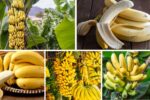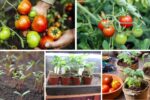Dragon fruit — also known as pitaya or pitahaya — is one of the most visually striking tropical fruits in the world. With its vibrant pink or yellow skin, green-tipped scales, and sweet, speckled flesh, it has captured the attention of consumers and farmers alike. Beyond its exotic appearance, dragon fruit is valued for its nutritional benefits, adaptability to tropical climates, and profitability in niche markets.
Although the crop is cultivated across Asia, the Americas, and even in parts of Australia, one country stands out as the global leader in dragon fruit production. In this article, we will examine which nation holds this position, explore the factors behind its dominance, compare it with other producers, and assess the challenges and opportunities facing the industry.
The Global Dragon Fruit Landscape

Dragon fruit comes from several species of climbing cacti, primarily Hylocereus undatus (white flesh), Hylocereus costaricensis (red flesh), and Selenicereus megalanthus (yellow skin, white flesh). Originally native to Central and South America, the fruit was introduced to Southeast Asia by European traders in the 19th century. Today, it is cultivated extensively in tropical and subtropical climates.
Global demand for dragon fruit has increased steadily in the last two decades, driven by:
- Rising health consciousness – Dragon fruit is rich in antioxidants, fiber, and vitamin C.
- Exotic fruit appeal – Its unique look and taste make it popular in export markets.
- Culinary versatility – Consumed fresh, in smoothies, desserts, and as a flavoring.
The crop is now grown commercially in countries such as Vietnam, Thailand, Malaysia, the Philippines, China, Nicaragua, Ecuador, Colombia, and Israel, with trial plantings in the United States (notably California and Florida).
The Short Answer: Vietnam Leads the World

The undisputed leader in global dragon fruit production is Vietnam. Estimates from agricultural trade reports indicate that Vietnam produces over 1 million tonnes of dragon fruit annually, accounting for a significant majority of the world’s supply.
Dragon fruit is such an important crop for Vietnam that it has become the nation’s primary fruit export in value terms, surpassing other tropical fruits like mango, banana, and pineapple. The fruit is cultivated mainly in southern provinces, with Bình Thuận province alone responsible for more than half of the national production.
Why Vietnam Dominates Dragon Fruit Production

Vietnam’s leadership in dragon fruit production is the result of several interrelated factors:
1. Ideal Climate and Geography
Vietnam’s tropical and subtropical climate, especially in the south-central coast and Mekong Delta, provides optimal conditions for dragon fruit cultivation. The plant thrives in well-drained sandy or loamy soils and requires warm temperatures with distinct dry and wet seasons.
2. Specialized Growing Regions
Bình Thuận, Long An, and Tiền Giang provinces have become specialized dragon fruit hubs, with thousands of hectares devoted to the crop. This clustering allows farmers to share knowledge, infrastructure, and access to processing facilities.
3. Off-Season Lighting Technology
Vietnamese growers pioneered the use of electric lighting systems to stimulate flowering during the off-season. By placing lights along the cactus trellises at night, they can induce blooms and ensure a year-round supply, maximizing export potential.
4. Strong Export Orientation
Vietnam’s proximity to China — the largest importer of dragon fruit — provides a huge market. Additionally, Vietnam exports to countries across Asia, Europe, and North America. Well-developed logistics and border trade agreements have made exporting efficient.
5. Government and Research Support
Agricultural research institutes in Vietnam have worked to improve dragon fruit varieties, develop disease-resistant plants, and provide training to farmers. The government has also promoted Good Agricultural Practices (GAP) to meet international food safety standards.
Dragon Fruit in Vietnam’s Economy

Dragon fruit has become a major foreign exchange earner for Vietnam. In peak years, export revenues from dragon fruit have reached over $1 billion USD. China is by far the largest buyer, accounting for more than 70% of exports. Other key destinations include Thailand, Indonesia, Malaysia, Singapore, and increasingly, markets in the European Union and the Middle East.
The fruit is not only sold fresh but also processed into juices, jams, dried snacks, and even wine. This diversification helps stabilize farmer incomes when fresh prices fluctuate.
Other Leading Dragon Fruit Producers

While Vietnam leads by a wide margin, several other countries have notable production:
- Thailand: A significant regional producer, Thailand grows both white and red-fleshed dragon fruits, primarily for domestic consumption and regional exports.
- Malaysia: Focuses on high-quality varieties, often targeting niche export markets.
- China: Once mainly an importer, China has rapidly expanded domestic dragon fruit production in provinces like Guangxi and Hainan to meet local demand.
- Nicaragua & Ecuador: Important suppliers to North America, especially during the off-season for Asian producers.
- Israel: A pioneer in desert cultivation of dragon fruit, using advanced irrigation and greenhouse systems.
Challenges in Dragon Fruit Production
Even for the world leader, dragon fruit farming comes with significant challenges:
1. Market Dependence on China
Vietnam’s heavy reliance on the Chinese market leaves it vulnerable to policy changes, border delays, or sudden drops in demand.
2. Price Volatility
During peak harvests, prices can drop sharply, especially if export channels face disruptions.
3. Pests and Diseases
The crop is susceptible to bacterial stem rot, anthracnose, and mealybugs, which can reduce yields and fruit quality.
4. Climate Change
Increasingly erratic rainfall, prolonged droughts, and storms threaten production stability in key growing regions.
Sustainability Considerations
As dragon fruit cultivation expands, sustainability issues must be addressed:
- Water Management: Although dragon fruit is a cactus, commercial production still requires regular irrigation during flowering and fruiting.
- Soil Health: Intensive monoculture can lead to soil nutrient depletion; crop rotation or organic amendments are needed.
- Light Pollution: Off-season lighting can contribute to light pollution; more energy-efficient LED systems are being promoted.
Vietnam has started adopting VietGAP and GlobalGAP certifications to encourage environmentally friendly and socially responsible farming practices.
Innovation and Future Outlook
Vietnam and other producers are investing in innovations to strengthen the dragon fruit industry:
- Value-Added Products: Freeze-dried dragon fruit snacks, dragon fruit powder for smoothies, and dragon fruit wine are emerging markets.
- Breeding Programs: Development of varieties with longer shelf life, deeper color, and higher sweetness for premium markets.
- Organic Farming: Growing demand in Europe and North America is pushing more farms toward certified organic production.
- Cold Chain Improvements: Better post-harvest handling and refrigerated transport extend shelf life and reduce losses.
Given the global trend toward health-conscious eating and the appeal of exotic fruits, dragon fruit demand is expected to grow, opening opportunities for new producers while maintaining Vietnam’s strong lead.
Implications for a Thesis
If your thesis centers on “Which country leads in dragon fruit production?”, identifying Vietnam is just the first step. A robust academic treatment could explore:
- Agro-ecological Factors – Why Vietnam’s climate and soils suit dragon fruit so well.
- Technological Innovation – How off-season lighting and trellis designs transformed production.
- Economic Dependencies – Risks of relying heavily on one major export market.
- Comparative Advantage – Why Vietnam outcompetes other tropical producers in yield and volume.
- Sustainability and Policy – Balancing growth with environmental stewardship and market diversification.
Such an approach will provide a rich analysis that moves beyond simple statistics into the structural, economic, and environmental dynamics of a rapidly growing fruit sector.
Conclusion
Vietnam is the clear global leader in dragon fruit production, contributing over a million tonnes annually and supplying markets around the world. Its success rests on a combination of natural advantages, technological innovation, organized farming regions, and strong export infrastructure.
However, with this dominance come challenges — from market dependence and price volatility to environmental concerns. The future of dragon fruit production will depend on diversification, sustainability, and continued innovation.
For researchers, Vietnam’s dragon fruit industry offers a fascinating case study in how a relatively niche fruit can become a major national export and a global agricultural success story.







Leave A Comment